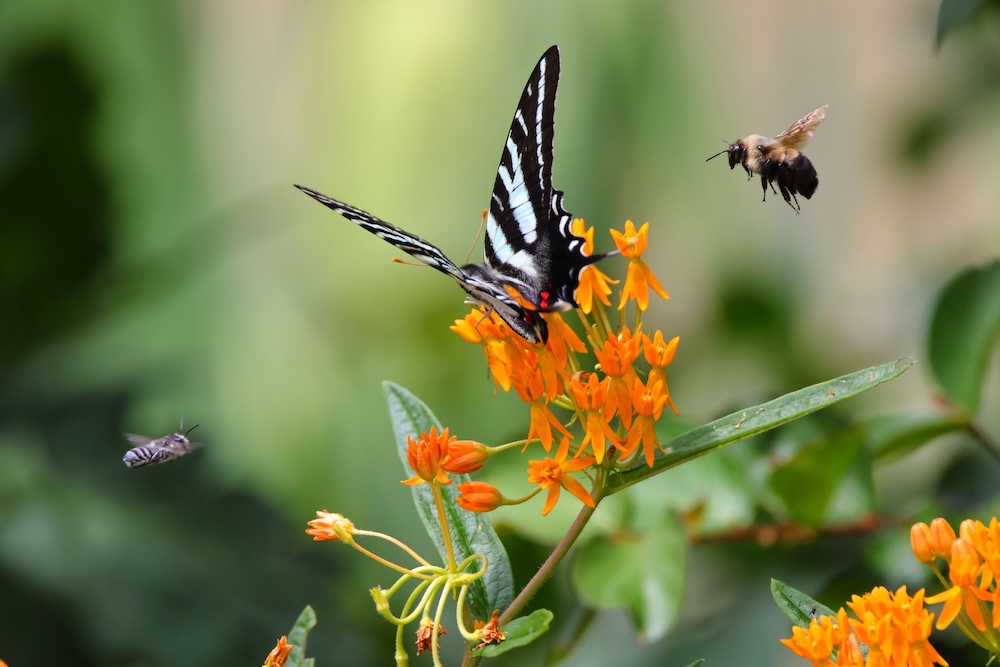Pollinators are tiny powerhouses responsible for one out of every three bites of food we eat. Bees, butterflies, hummingbirds, moths, and even beetles and bats all help transfer pollen, allowing plants to produce fruit, seeds, and flowers. But their populations are under threat from habitat loss, pesticides, and climate change.
You can help—right in your own backyard. A pollinator-friendly garden not only supports vital species, but also brings vibrant color, movement, and life to your outdoor space. It’s beautiful, beneficial, and easier than you might think.
Why Pollinator Gardens Matter
Pollinators are essential to ecosystems and agriculture. Without them, many fruits, vegetables, and flowering plants couldn’t reproduce.
But pollinators face serious challenges:
- Pesticide exposure
- Loss of native plant habitats
- Climate change and extreme weather
- Invasive plant species
By creating a garden that offers food, shelter, and safe passage, you help restore balance and biodiversity to your local environment.
What Makes a Garden Pollinator-Friendly?
To attract and support pollinators, your garden should offer:
- Nectar-rich flowers throughout the growing season
- Host plants for butterflies to lay eggs and for caterpillars to feed
- Native plants that pollinators have evolved with
- Safe water sources
- Shelter from wind, predators, and chemicals
Best Plants for Pollinators
Choose Native Plants
Pollinators recognize and prefer the plants they’ve co-evolved with. Native plants are also better adapted to local climates and soil, making them low-maintenance and drought-resistant.
Flowering Plants by Season
Spring Bloomers:
- Crocus
- Lungwort
- Wild geranium
- Willow trees
- Redbud
Summer Bloomers:
- Coneflower (echinacea)
- Bee balm
- Lavender
- Milkweed
- Coreopsis
- Black-eyed Susan
Fall Bloomers:
- Asters
- Goldenrod
- Sedum
- Joe-Pye weed
A succession of blooms ensures pollinators always have access to nectar.
Herbs That Attract Pollinators
Let herbs flower (bolt) for maximum benefit:
- Basil
- Oregano
- Thyme
- Mint
- Dill
- Chives
These draw bees and butterflies while being useful in your kitchen.
Support All Kinds of Pollinators
Bees
Bees are the most efficient pollinators, and most are solitary (not living in hives). Native bees like mason bees, sweat bees, and leafcutter bees are particularly important.
Tips for bees:
- Plant in large clumps of the same flower
- Use a variety of flower shapes (flat, tubular, bell-shaped)
- Leave patches of bare soil or install bee hotels
Butterflies
Butterflies need both nectar and host plants for their caterpillars.
Top host plants:
- Milkweed (for monarchs)
- Dill and parsley (for swallowtails)
- Nettles (for red admirals)
Tips:
- Provide sunny, wind-protected spots
- Add flat stones for sunbathing
- Avoid pesticides, even natural ones, near host plants
Hummingbirds
These fast-moving pollinators love bright colors and tubular blooms.
Favorites include:
- Trumpet vine
- Cardinal flower
- Bee balm
- Columbine
- Salvia
Use red or orange feeders with no dyes (plain sugar water only—1 part sugar to 4 parts water, changed every few days).
Water and Shelter for Pollinators
Create a Pollinator Water Source
Bees and butterflies need water, but can drown in deep containers.
DIY options:
- A shallow dish filled with pebbles and water
- A birdbath with large rocks
- A hanging saucer with a bit of mud (butterflies love it for minerals)
Change water frequently to avoid mosquito breeding.
Offer Shelter
- Leave hollow stems or wood piles for nesting bees
- Keep leaf litter or brush in a corner for moths and beetles
- Grow dense hedges or shrubs for safe resting spots
- Add a bug hotel with natural materials like bamboo, logs, or pine cones
Avoid tidying up everything—some of the best pollinator homes are “messy” by design.
Avoid Pesticides and Chemicals
Even organic pesticides can harm pollinators if used at the wrong time. To keep your garden safe:
- Never spray flowering plants
- Use physical barriers or companion planting instead
- Encourage natural predators like ladybugs, praying mantises, and birds
- Apply any necessary treatments at dusk when pollinators are less active
If you must use pest control, do so in non-blooming seasons or with targeted spot treatments.
Design Tips for a Buzzing Garden
Group Flowers by Type
Plant large clumps of the same flower species to make them easier for pollinators to find. Think mass planting instead of scattering individual plants.
Include a Variety of Colors and Shapes
Different pollinators prefer different colors and flower structures:
- Bees: Blue, purple, and white
- Butterflies: Bright reds and oranges
- Hummingbirds: Red and tubular flowers
- Moths: Pale-colored flowers that open at night
Aim for diversity to welcome all types of pollinators.
Make It Accessible Year-Round
Leave perennials standing through winter for overwintering insects. Avoid over-cleaning in fall—leaf litter and plant debris serve as habitat for bees, butterflies, and beetles.
Pollinator-Friendly Garden in Small Spaces
Even patios, balconies, and windowsills can support pollinators.
Try:
- A container of lavender or salvia
- Hanging baskets with nasturtiums or calibrachoa
- A vertical herb garden
- A small bee hotel attached to a sunny wall
Every square foot of habitat counts.
Community and Education
Share your pollinator-friendly garden with neighbors, schools, or local conservation groups.
- Host seed swaps or pollinator plant giveaways
- Post signs (“Bee Safe Garden” or “Pesticide-Free Zone”)
- Share your garden on social media to inspire others
Collectively, we can rebuild pollinator corridors one garden at a time.
Affirmations for Living with Nature
- “I garden with intention and care for all living things.”
- “My flowers feed the future.”
- “I am part of a thriving, buzzing web of life.”
Weekly Pollinator Garden Care Checklist
- Refill water dishes
- Deadhead spent blooms to encourage more flowers
- Observe and photograph visiting pollinators
- Prune gently, keeping some stems for nesting
- Let some herbs and veggies bolt (flower) for bees
Pollinator gardens don’t just benefit insects—they feed your soul and bring beauty, motion, and meaning to your space.









Reader Interactions